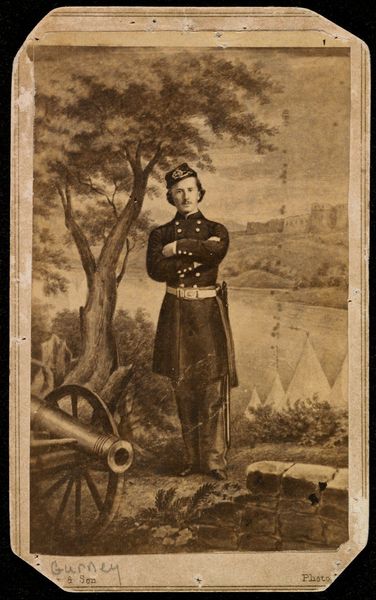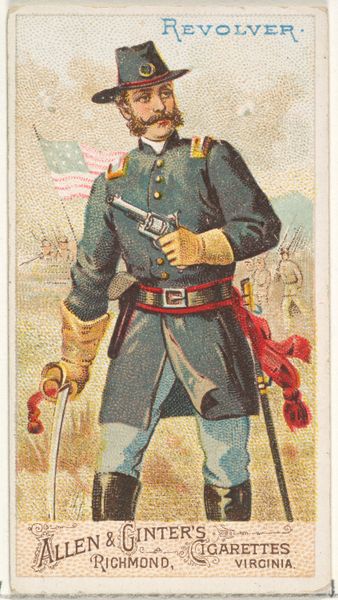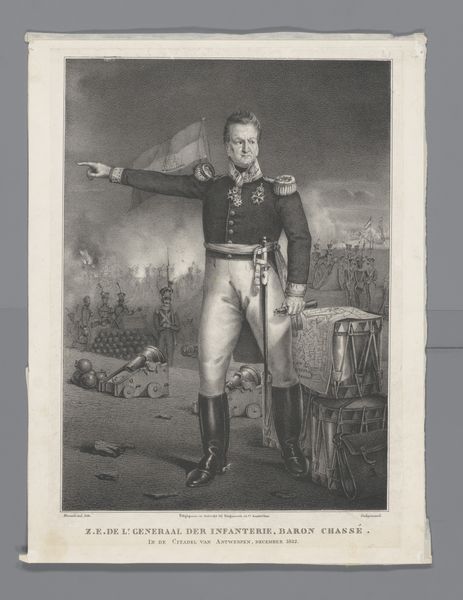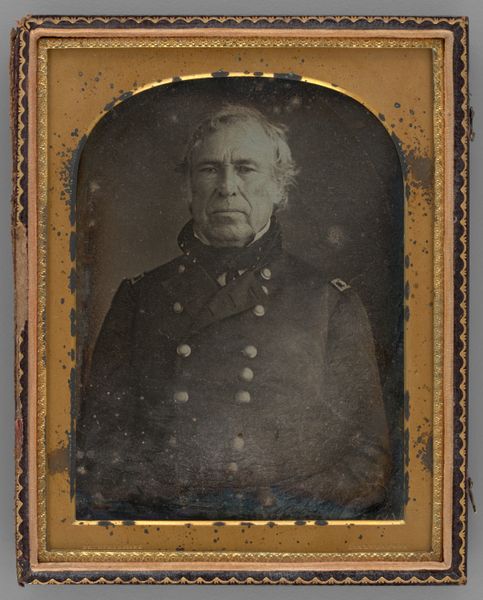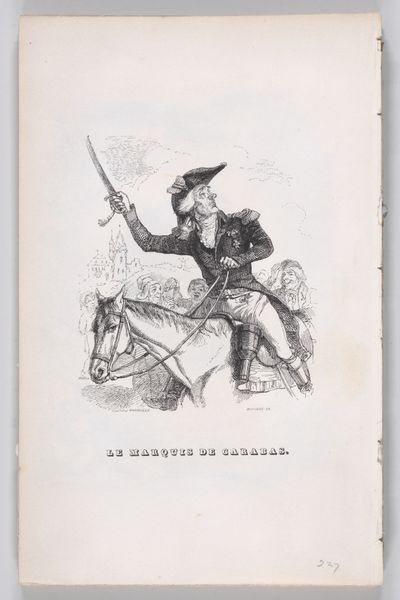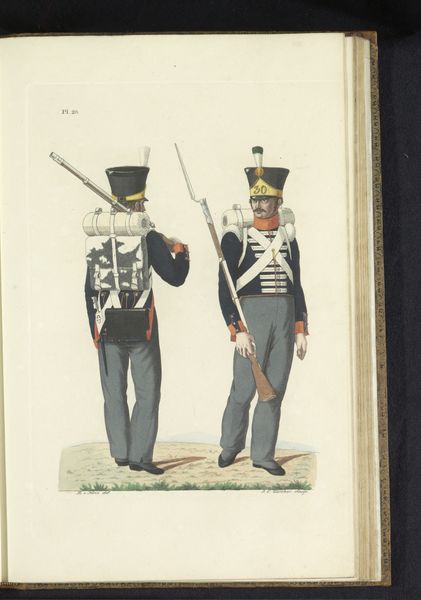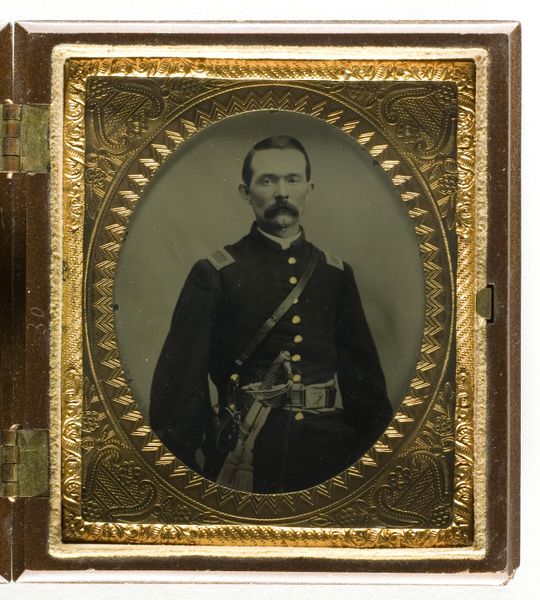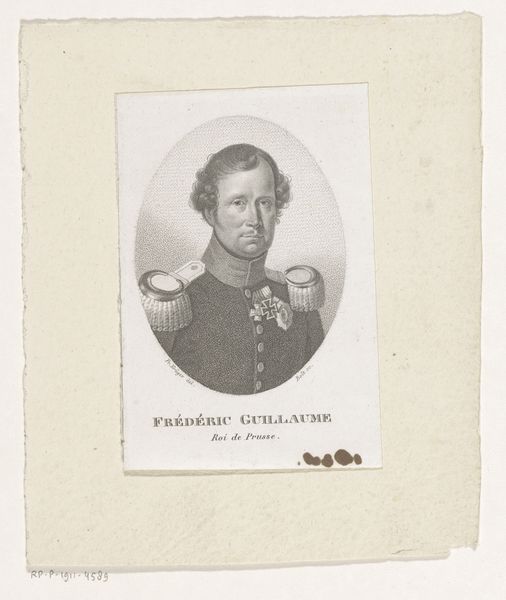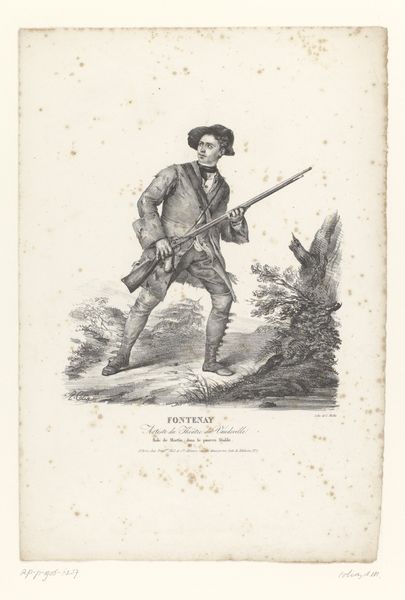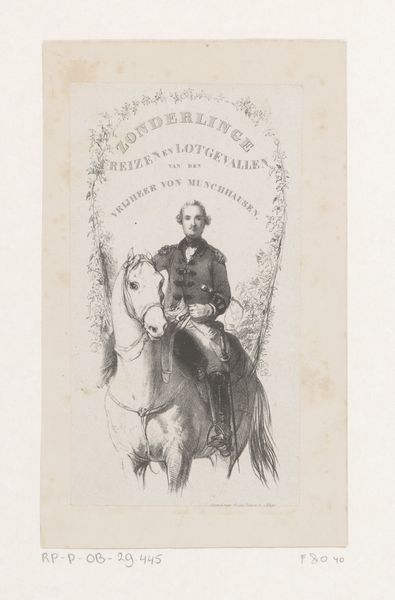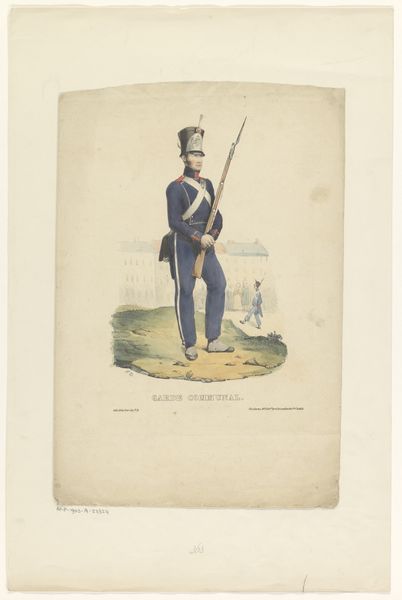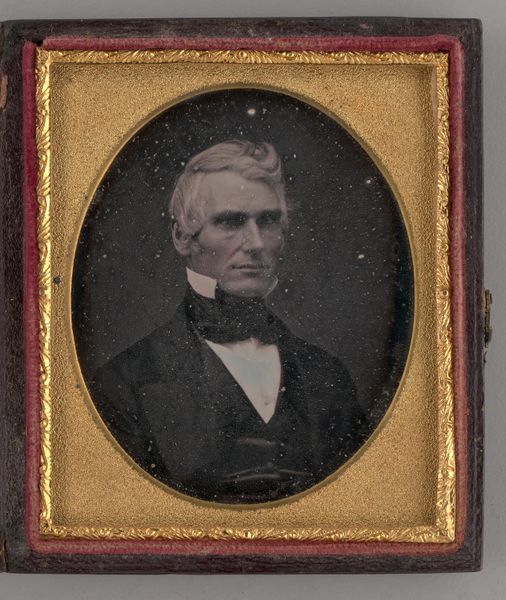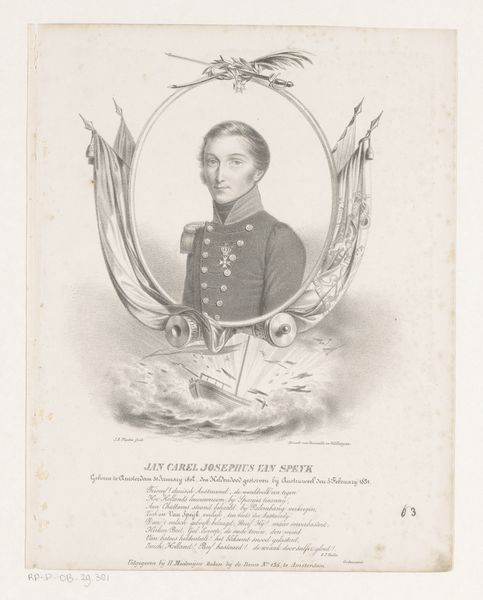
A Short History: General Winfield Scott, from the Histories of Generals series (N114) issued by W. Duke, Sons & Co. to promote Honest Long Cut Smoking and Chewing Tobacco 1888
0:00
0:00
drawing, coloured-pencil, print
#
portrait
#
drawing
#
coloured-pencil
# print
#
coloured pencil
#
men
#
history-painting
Dimensions: Sheet: 4 3/16 × 2 1/2 in. (10.7 × 6.4 cm)
Copyright: Public Domain
Editor: This chromolithograph, printed in 1888 by W. Duke, Sons & Co., is titled "A Short History: General Winfield Scott." It's fascinating to see a war hero memorialized on what was essentially a tobacco advertisement. What stands out to me is the juxtaposition of the formal portrait with scenes of battle, like a romanticized history. How do you interpret this work? Curator: It's more than romanticized history, it's also carefully constructed mythology, meant to sell a product. Winfield Scott represents a specific, palatable version of American masculinity—strength, leadership, and valor. This was made just a few decades after the Civil War ended, a period of immense social upheaval and shifting national identity. How do you think marketing, specifically associating these ideas with a consumer product, contributed to these larger narratives? Editor: I hadn’t thought about the reconstruction era. So the portrait isn't just about celebrating Scott, but also reinforcing particular ideals tied to being an American man at that moment? Curator: Precisely. These trading cards, though seemingly trivial, acted as powerful vehicles for disseminating and normalizing very specific values. The battles depicted, even softened as they are, connect smoking and chewing tobacco to bravery, success, and even national unity in a period of deep fractures along racial and political lines. The "short history" offered isn't neutral; it's shaping public memory for profit. It may be important to examine who benefits from such constructions. Editor: That makes so much sense! It’s not just a portrait, but a snapshot of cultural values and how they were being marketed. Thanks for offering a critical lens that examines what this "short history" conceals. Curator: And thank you for recognizing how these small historical fragments speak volumes about the era in which they were created.
Comments
No comments
Be the first to comment and join the conversation on the ultimate creative platform.
